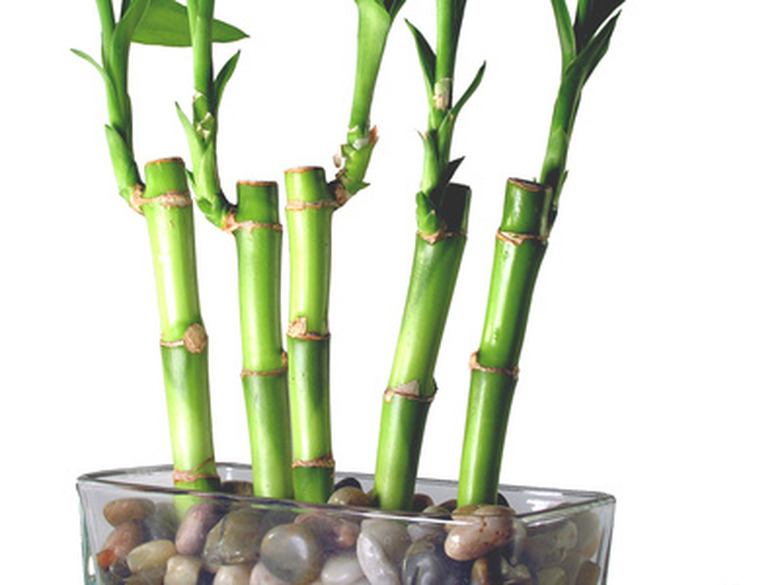Bamboo Vs. Lucky Bamboo
Bamboo has gained popularity in the west as western interpretations of the Chinese art of feng shui, or "wind water," have become popular in feng shui. Bamboo, and bamboo-like plants, are said to change the chi energy flow in a room when properly placed. Bamboo and lucky bamboo are commonly used in feng shui redesigns of rooms. Although their uses in feng shui are the same, the two plants are completely different.
Species
Lucky bamboo and bamboo are not even related to each other. Lucky bamboo is not bamboo, but a water lily that looks very much like bamboo. True bamboo, on the other hand, is a very large grass. There are over 1,000 species of true bamboo, ranging from small dwarfs to much taller bamboos.
- Bamboo has gained popularity in the west as western interpretations of the Chinese art of feng shui, or "wind water," have become popular in feng shui.
- Bamboo and lucky bamboo are commonly used in feng shui redesigns of rooms.
Water
The two species have quite different water requirements. As a water lily, lucky bamboo is best grown in sand or soil at the bottom of a container full of water. However, it also can grow in soil. The water in lucky bamboo should be changed every two to three weeks, and the roots of the plants should be washed. Lucky bamboo is sensitive to common additives to tap water, so you should use filtered or distilled water. True bamboo, on the other hand, requires water like any other grass. The soil in which true bamboo grows should be kept moist, but not soaked.
- The two species have quite different water requirements.
- Lucky bamboo is sensitive to common additives to tap water, so you should use filtered or distilled water.
Sun
Some species of true bamboo can have similar light requirements to lucky bamboo. Lucky bamboo does not need much light. In fact, lucky bamboo does best in subdued light. Direct light can cause the leaves to turn yellow and drop off. True bamboo grows naturally in forests under a protective canopy. Dwarf species may do better in full shade, but larger bamboos may do better with partial sun.
Fertilization
Fertilization of the two species also differs. Lucky bamboo benefits from periodic applications of half-strength African violet fertilizer or aquarium fertilizer. True bamboo does well when fertilized as you would a lawn.
- Some species of true bamboo can have similar light requirements to lucky bamboo.
- True bamboo does well when fertilized as you would a lawn.
Size
Lucky bamboo stems generally are not strong enough to support plants taller than two to three feet tall. Smaller true bamboos are generally between three and six feet tall, but can sometimes be miniaturized using bonsai root pruning techniques. Larger bamboos are commonly in the 12 to 20 foot range, with the tallest of the bamboo species, giant bamboo, often reaching 70 feet tall.
